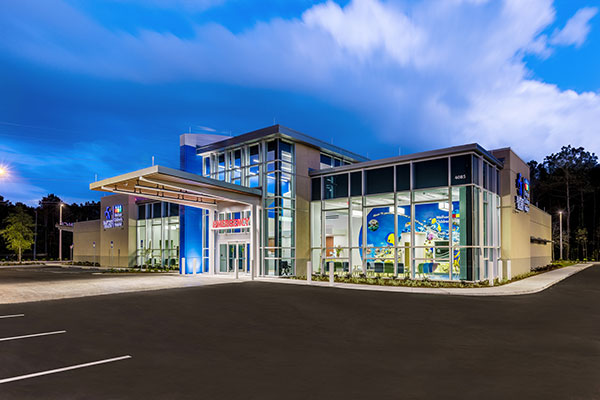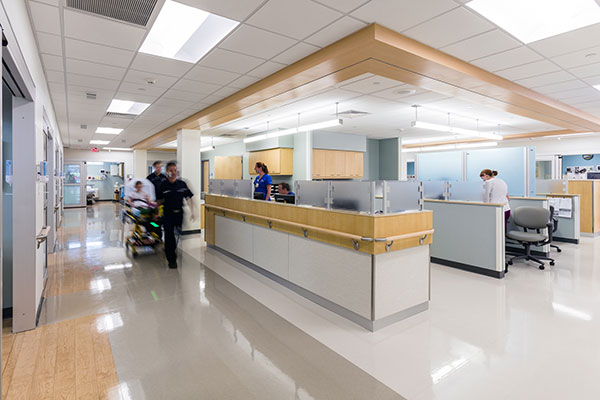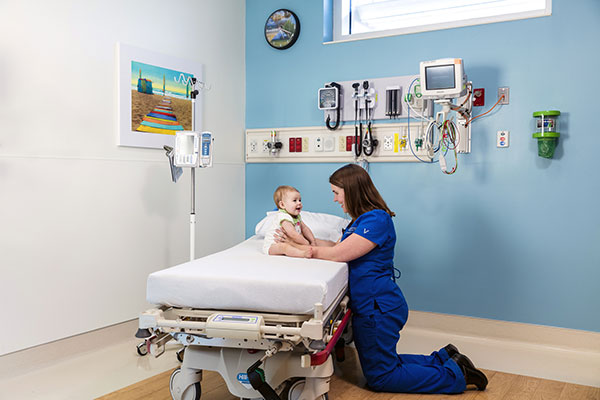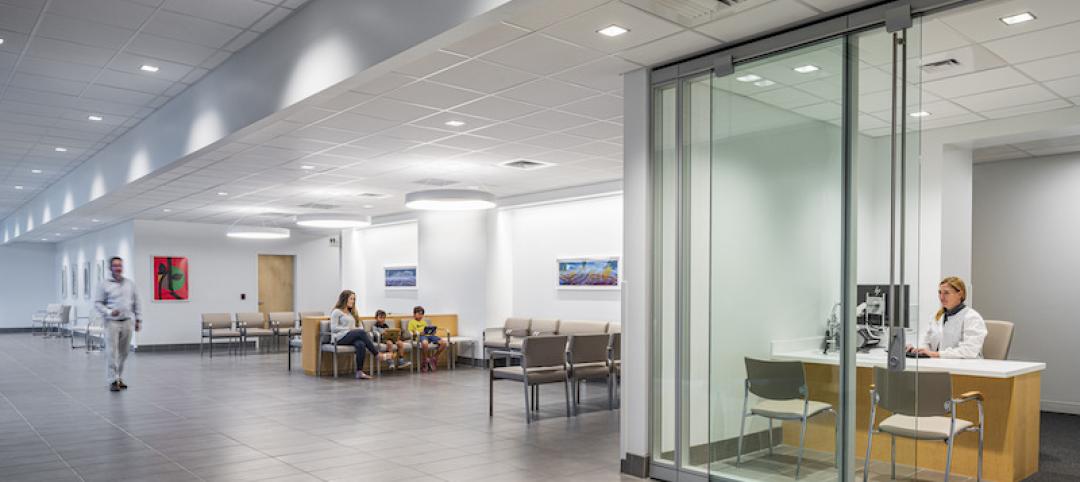Few would argue that the healthcare landscape is rapidly evolving. Today’s healthcare consumer has become far more engaged, not only demanding a greater level of personalization and convenience in their healthcare experience, but also seeking greater transparency in areas such as network coverage and medical costs. These changing patient expectations, coupled with advances in medical technology, have created a paradigm shift in healthcare delivery that is taking emergent care and surgical procedures beyond hospital walls and into outpatient facilities such as freestanding emergency departments (FSEDs) and ambulatory surgery centers (ASCs). Offering the one-two punch of cost savings and convenience, ASCs are increasingly becoming the venue of choice for both physicians and patients because of their ability to perform increasingly complex surgeries thanks to improved anesthetic techniques and less invasive surgical procedures—services that typically come with a much higher price tag when performed in a hospital setting.
Given this market trend, it is quite feasible that ASCs will be receiving a greater number of high-acuity patients in the future. In fact, recent legislation in Florida proposed that ASCs should be able to keep patients for at least 24 hours, and then allow them to stay up to 72 hours in a post-surgical Recovery Care Center (RCC), while Arizona, Connecticut and Illinois have all established licensing standards for RCCs. If this trend continues, it will open the door to an entirely new type of outpatient facility where an ASC can take on more complex and varied types of surgeries.
 The freestanding emergency department was a foreshadowing of things to come in terms of stand-alone outpatient care. Photo: Baptist Emergency at Town Center, Jacksonville, Florida.
The freestanding emergency department was a foreshadowing of things to come in terms of stand-alone outpatient care. Photo: Baptist Emergency at Town Center, Jacksonville, Florida.
Sustainability of the Traditional Hospital Model
One foreseeable issue with including Recovery Care Centers in ASCs is the potential impact on the sustainability and health of traditional hospitals. For example, many of the services that could end up shifting from hospitals to ASCs are currently the big revenue generators for hospitals. If this migration occurs, it will take with it a certain portion of lower-acuity med/surg patients, and the hospital will lose that revenue. What remains in this scenario is the traditional hospital would continue to serve acute cases such as intensive, coronary and critical care patients that are typically more expensive to treat, resulting in fewer beds. It also raises the twofold question: What service lines do you continue to offer in a hospital, and can a hospital be sustained by higher-acuity beds? Moreover, could you still maintain the healthcare delivery models that comprise the higher-cost centers of excellence, such as cancer centers and cardiovascular/heart centers, all of which need to continue to be in a centralized hospital to provide coordinated care. These considerations also carry significant implications for the built environment.
Patient Safety and Acuity
There are two schools of thought within the healthcare industry when it comes to the subject of acuity levels and patient safety in ASCs. One is that it is an unnecessary risk to treat higher-acuity patients outside of the hospital environment, where if a patient crashes during a procedure, you can immediately transfer them to the OR rather than having to transport them to the hospital. Others argue that because ASCs specialize in the types of surgical procedures they perform that they can concentrate on patient safety, and, just like hospital ORs, the surgeons and nurses follow a specific set of protocols and procedures that consistently lead to positive patient outcomes. In contemplating the future of ASCs through the lens of patient safety and acuity, it brings to mind the 24/7 freestanding emergency department and similar discussions that surrounded this transformative outpatient care model when it was first coming into popularity. Essentially, FSEDs are designed to provide the same level of care as a hospital-based emergency room, and trauma patients, depending on their condition, can either be directly admitted to the facility for up to 24 hours or stabilized and transferred to the nearest hospital OR. In the same way that FSEDs had to establish clear transfer protocols for patients based on risk and acuity levels, I believe it is imperative to patient safety that ASCs establish a strong transfer protocol for the emergent patient.
 In the same way that FSEDs had to establish clear transfer protocols for patients based on the level of acuity, ASCs with Recovery Care Centers should establish a strong transfer protocol for the emergent patient. Photo: Baptist Emergency at Town Center, Jacksonville, Florida.
In the same way that FSEDs had to establish clear transfer protocols for patients based on the level of acuity, ASCs with Recovery Care Centers should establish a strong transfer protocol for the emergent patient. Photo: Baptist Emergency at Town Center, Jacksonville, Florida.
Planning for Uncertainty
With uncertainty rapidly becoming the new normal in healthcare, perhaps the best thing we can do is embrace it by planning for it. This means thinking through the space planning, programming and design of ASCs that incorporate 72-hour RCCs. And these planning considerations must be flexible in order to deal with the uncertainty of market conditions. Along with helping clients implement these changes, designers should also work with state regulatory agencies to determine how to implement regulations using previous best practices to build a case for a path forward. In other words, we need to evaluate what has worked in the past and then refine those models to determine the best-case design scenarios.
Planning for uncertainty also raises some key questions. These include: Is there enough need in your market for an RCC? If the answer is yes, then where will the RCC go? Is there enough space on-site? If so, will space need to be reconfigured or built out? How will it impact the overall facility in terms of circulation, serviceability and operational efficiencies? For example, ASCs partnered with RCCs will not only treat lower-acuity patients who are typically in and out of the facility within a day, but will also care for higher-acuity patients who will spend up to three days in recovery care. So, how will this impact operational efficiencies in terms of how staff delivers care across the various spaces? And perhaps the most important and timely question: If you choose to include these RCCs now as opposed to in the future, how do you design for a recovery unit that isn’t regulated? Do you wait, or should you be building for the future?
Ultimately, architects aren’t just planners and designers—we are strategic partners with our clients. It is our responsibility to work closely with them during the life cycle of a project to help them navigate complex areas such as regulatory compliance, and to stay fully informed of industry trends prior to the design of a project. These market trends not only have the potential to impact a client’s operations, but at the end of the day, the way they do business.

More from Author
Gresham Smith | Aug 17, 2023
How to design for adaptive reuse: Don’t reinvent the wheel
Gresham Smith demonstrates the opportunities of adaptive reuse, specifically reusing empty big-box retail and malls, many of which sit unused or underutilized across the country.
Gresham Smith | May 24, 2023
Designing spaces that promote enrollment
Alyson Mandeville, Higher Education Practice Leader, argues that colleges and universities need to shift their business model—with the help of designers.
Gresham Smith | Apr 24, 2023
Smart savings: Commissioning for the hybrid workplace
Joe Crowe, Senior Mechanical Engineer, Gresham Smith, shares smart savings tips for facility managers and building owners of hybrid workplaces.
Gresham Smith | Mar 20, 2023
3 ways prefabrication doubles as a sustainability strategy
Corie Baker, AIA, shares three modular Gresham Smith projects that found sustainability benefits from the use of prefabrication.
Gresham Smith | Jan 19, 2023
Maximizing access for everyone: A closer look at universal design in healthcare facilities
Maria Sanchez, Interior Designer at Gresham Smith, shares how universal design bolsters empathy and equity in healthcare facilities.
Gresham Smith | Dec 20, 2022
Designing for a first-in-the-world proton therapy cancer treatment system
Gresham Smith begins designing four proton therapy vaults for a Flint, Mich., medical center.
Gresham Smith | Nov 21, 2022
An inside look at the airport industry's plan to develop a digital twin guidebook
Zoë Fisher, AIA explores how design strategies are changing the way we deliver and design projects in the post-pandemic world.
Gresham Smith | Feb 13, 2022
Helping maximize project dollars: Utility coordination 101
In this post, I take a look at the utility coordination services our Transportation group offers to our clients in an attempt to minimize delays and avoid unforeseen costs.
Gresham Smith | May 7, 2021
Private practice: Designing healthcare spaces that promote patient privacy
If a facility violates HIPAA rules, the penalty can be costly to both their reputation and wallet, with fines up to $250,000 depending on the severity.
Gresham Smith | Mar 4, 2021
Behavior mapping: Taking care of the caregivers through technology
Research suggests that the built environment may help reduce burnout.
















